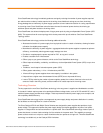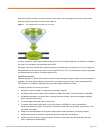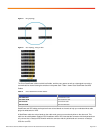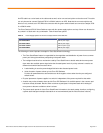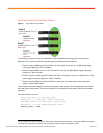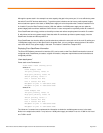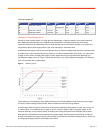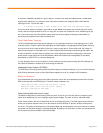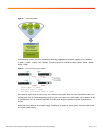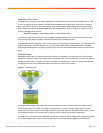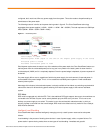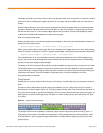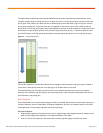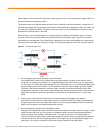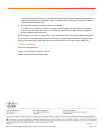
© 2012 Cisco and/or its affiliates. All rights reserved. This document is Cisco Public Information. Page 10 of 17
A maximum of 8400W is possible in a pool of power in a stack of four switches loaded with two 1100W power
supplies each. Obviously, it is excessive; even if the stack consists of four Catalysts 3750-X-48P switches
requiring full PoE+. Let’s do the math:
4 switches x 48 ports x 30W = 5760W: a lot less than the available 8400W
If only one power supply is installed in each switch, we get 4200W in the power pool. Now we fall short, but the
reality is that not everyone needs full PoE+ on every port in a stack of four switches; hence, 4200W may be just
fine. Here is where the Cisco StackPower feature starts to provide savings by allowing the administrator to
purchase power supplies as the need for power grows.
Cisco StackPower Topology
The Cisco StackPower technology can be deployed in a ring topology as well as in a star topology over an XPS,
as shown earlier in Figures 4 and 5. Both topologies have advantages; a ring topology provides greater resiliency,
since current can flow in either direction in the ring in case of a path failure. On the other hand, the number of
switches sharing power is restricted to four. To ensure safety and prevent large currents through the cables, the
number of switches in a power stack is limited to four; some deployment scenarios create large currents that
would require a larger gauge wire in the StackPower cables which reduces the manageability of the cables.
Nonetheless, a stack of four is a common deployment.
In a star topology, there is no such restriction; all nine switches can share power through the XPS, although one
more piece of hardware is installed in the rack among the switches.
eXpandable Power System (XPS 2200)
The XPS 2200 is the next-generation power redundant system, providing redundancy for up to nine Cisco Catalyst
3560-X Series Switches as well as Cisco StackPower capability to up to nine Catalyst 3750-X switches.
Modes of Operation
Cisco StackPower technology has three modes of operation, which offer new capabilities as well as the classical
RPS functionality without the RPS device. The three modes of operation are:
Power-sharing mode, strict and non-strict (loose)
Redundant mode, strict and non-strict (loose)
RPS mode (requires an XPS 2200)
Power-Sharing Mode (Non-strict or loose)
The default configuration is power-sharing mode non-strict. Of course, you have the option of configuring strict
mode, which would keep you from creating a negative power budget. The same is true for redundant mode.
Power sharing mode is the core of StackPower and is the simplest (Figure 8). The power gets allocated from the
power pool as power requests come in from the switches and PoE devices (IP phones, wireless access points,
and so on). The power stack keeps track of the power budget and allocated power count and continues to allocate
new power until the power budget is completely depleted. By default, this mode does not have any restrictions and
will allocate all the power available in the power budget.



